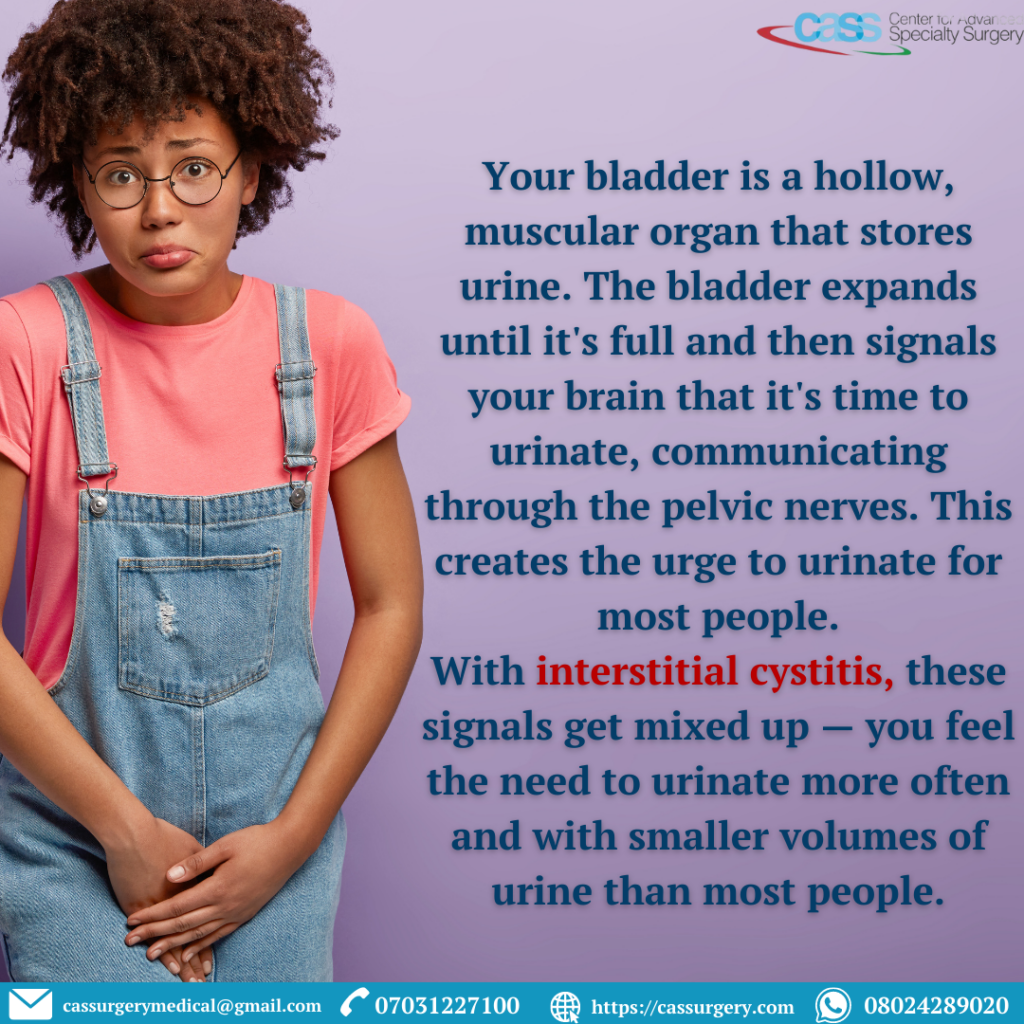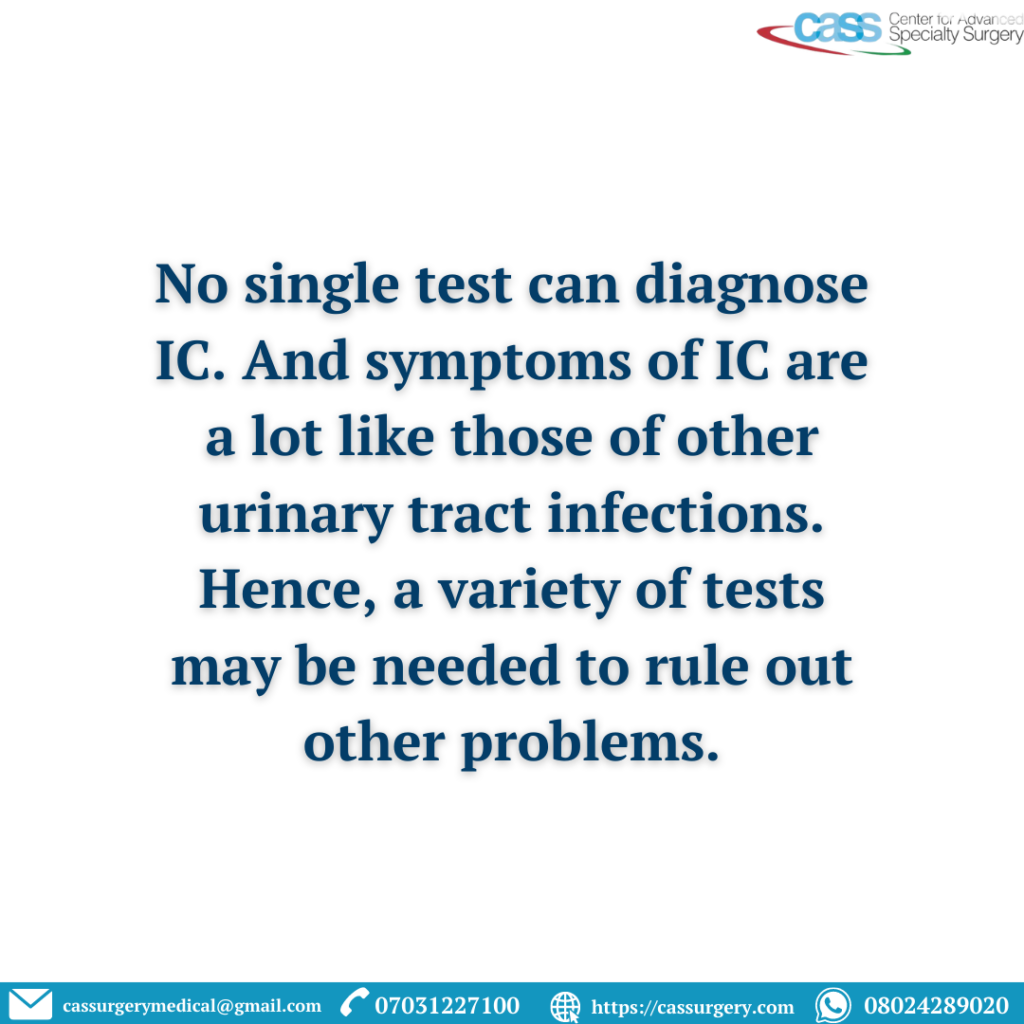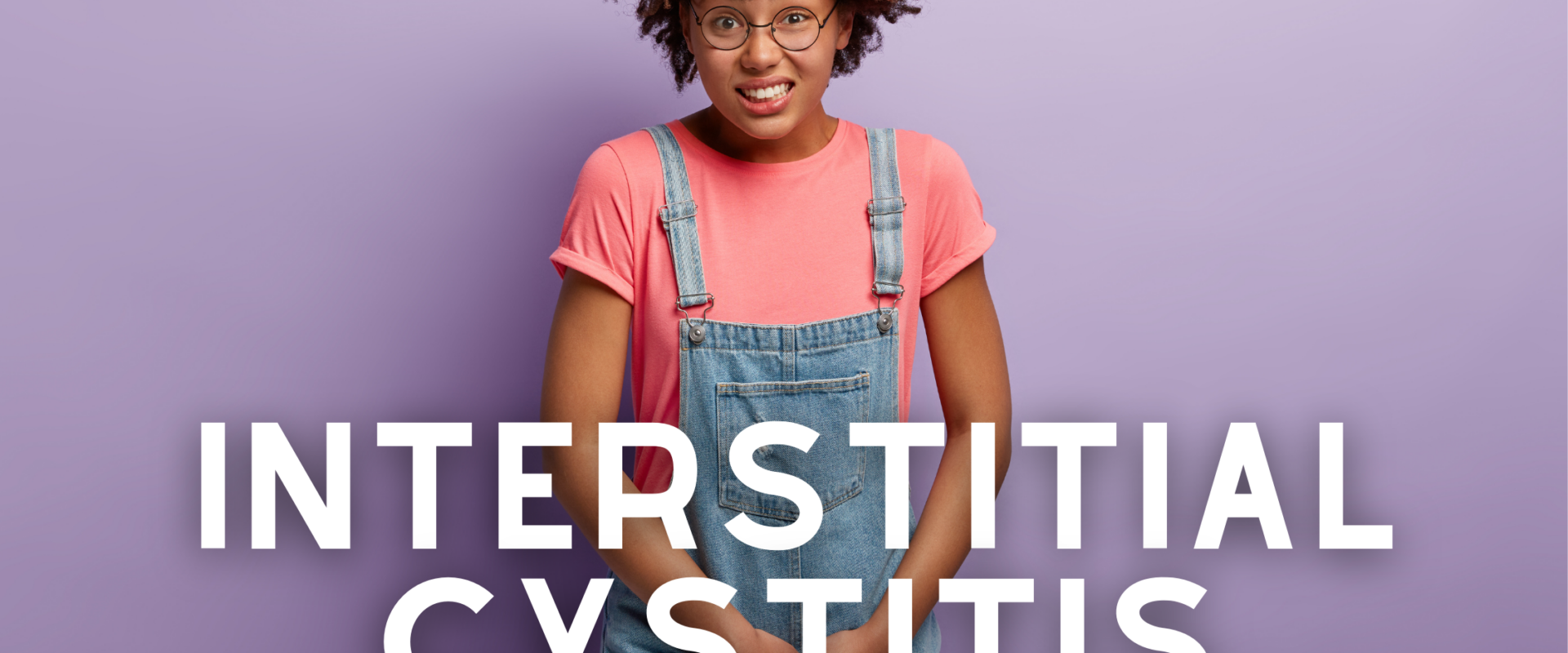Your bladder is a hollow, muscular organ that stores urine. The bladder expands until it’s full and then signals your brain that it’s time to urinate, communicating through the pelvic nerves. This creates the urge to urinate for most people.
With interstitial cystitis, these signals get mixed up — you feel the need to urinate more often and with smaller volumes of urine than most people.

CAUSES OF INTERSTITIAL CYSTITIS
The cause of interstitial cystitis (IC) is unknown. Researchers are looking at many theories to understand the causes of IC and find the best treatments. However, some foods precipitate the symptoms in many people.
- Citrus fruits
- Tomatoes
- Chocolate
- Coffee
- Potassium-rich foods
- Alcoholic beverages
- Caffeinated beverages
- Spicy foods
- Some carbonated beverages
SYMPTOMS OF INTERSTITIAL CYSTITIS
Interstitial cystitis signs and symptoms include:
- Pain in your pelvis or between the vagina and anus in women
- Pain between the scrotum and anus (perineum) in men
- Chronic pelvic pain
- A persistent, urgent need to urinate
- Frequent urination, often of small amounts, throughout the day and night (up to 60 times a day)
- Pain or discomfort while the bladder fills and relief after urinating
- Pain during sex
COMPLICATIONS
Interstitial cystitis can result in several complications, including:
- Reduced bladder capacity. Interstitial cystitis can cause stiffening of the bladder wall, which allows your bladder to hold less urine.
- Lower quality of life. Frequent urination and pain may interfere with social activities, work, and other activities of daily life.
- Sexual intimacy problems. Frequent urination and pain may strain your personal relationships, and sexual intimacy may suffer.
- Emotional troubles. The chronic pain and interrupted sleep associated with interstitial cystitis may cause emotional stress and can lead to depression.

DIAGNOSIS OF INTERSTITIAL CYSTITIS
No single test can diagnose IC. And symptoms of IC are a lot like those of other urinary tract infections. Hence, a variety of tests may be needed to rule out other problems. These tests may include:
- Urinalysis. Lab testing of urine to look for certain cells and chemicals. This includes red and white blood cells, germs, or too much protein.
- Urine culture and cytology. Collecting and checking urine for white blood cells and bacteria. Also, if present, what kind of bacteria there are in the urine.
- Cystoscopy. A thin, flexible tube and viewing device, is put in through the urethra to examine the bladder and other parts of the urinary tract. This checks for structural changes or blockages.
- Bladder wall biopsy. A test in which tissue samples are removed from the bladder (with a needle or during surgery) and checked under a microscope to see if cancer or other abnormal cells are present.
- Lab exam of prostate secretions (in men). This is done to look for inflammation and/or infection of the prostate.
- Medical history and bladder diary. You may be asked to keep a bladder diary, recording the volume of fluids you drink and the volume of urine you pass.
- Pelvic exam. During a pelvic exam, your external genitals, vagina and cervix and your abdomen may be assessed to feel your internal pelvic organs. Your anus and rectum may as well be examined
TREATMENT
The most important element in treating patients with interstitial cystitis is education and emotional support. Periodic exacerbations are managed as they occur because no long-term therapy has been shown to prevent or delay recurrent episodes. Therefore, the purpose of treatment is to palliate and alleviate symptoms.
Because no discrete pathognomonic pathologic criteria exist for assessing and monitoring disease severity, indications and goals for treatment are based on the degree of patient symptoms. Assessing patient response to treatment is also complicated because of the subjective nature of symptoms; the waxing and waning nature of symptoms without treatment; and the lack of objective serologic, physical, or histopathologic findings. Conservative measures and oral or intravesical treatments are considered first-line treatments.
Available treatment options include:
- Behavioural therapy
- Dietary therapy
- Oral pharmacologic agents (e.g., pentosan polysulfate sodium [Elmiron], antihistamines, tricyclic antidepressants, analgesics, anti-inflammatory agents)
- Intravesical therapy (i.e., medications intermittently instilled directly into the bladder via a catheter)
- Surgical therapies
- Electrical stimulation
- Complementary therapies (e.g., acupuncture, hypnosis, pelvic floor massage)


comment (0)